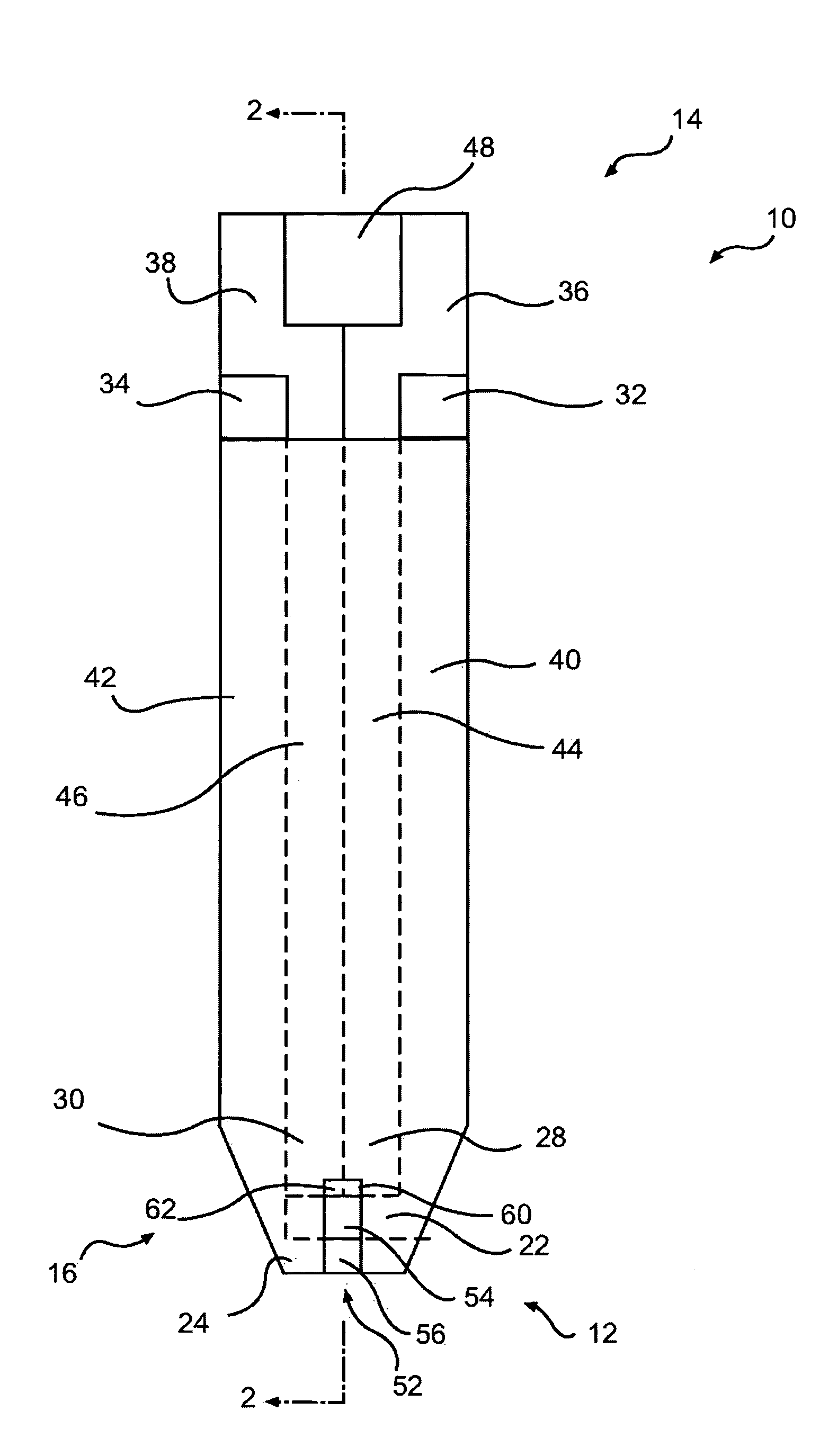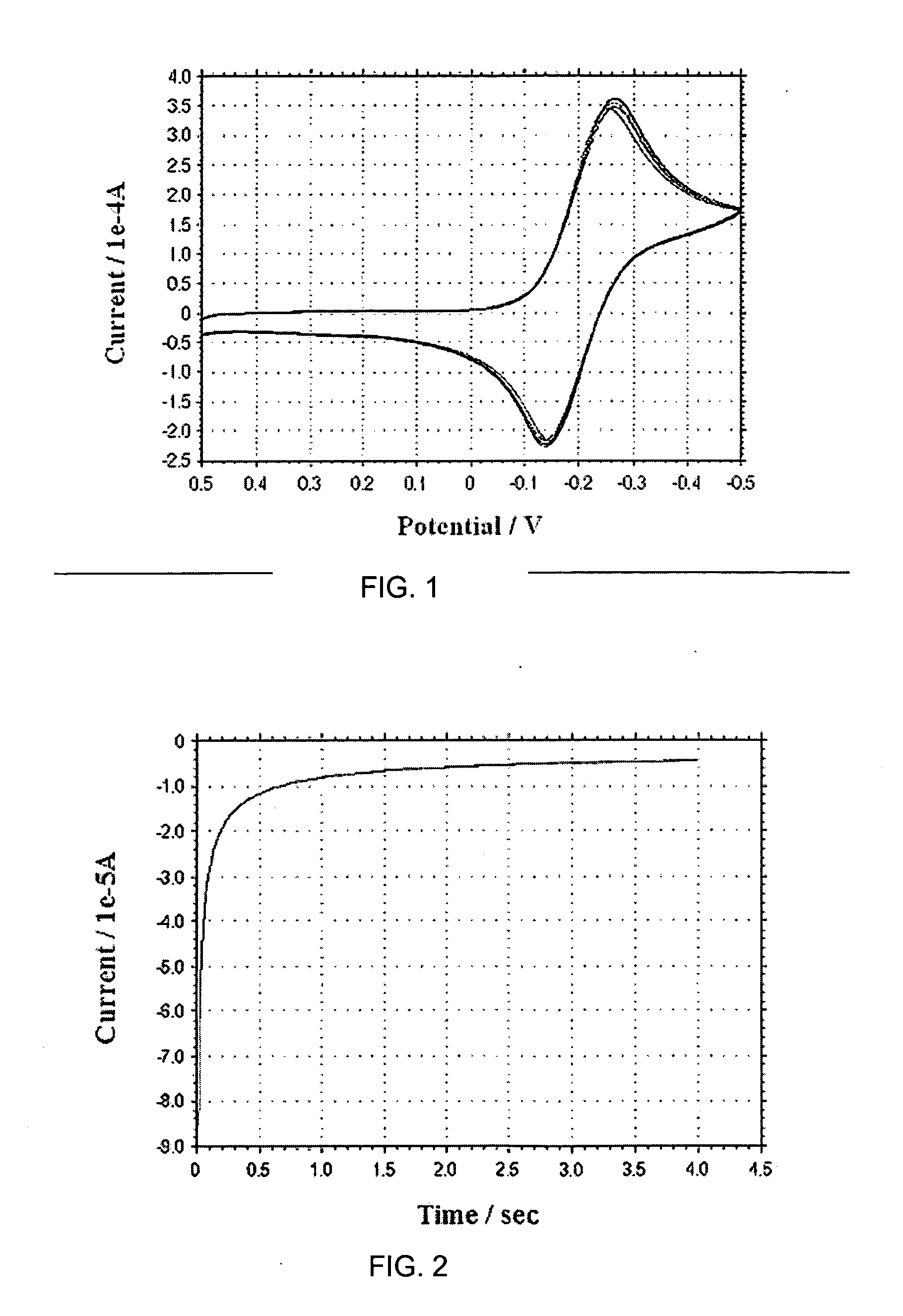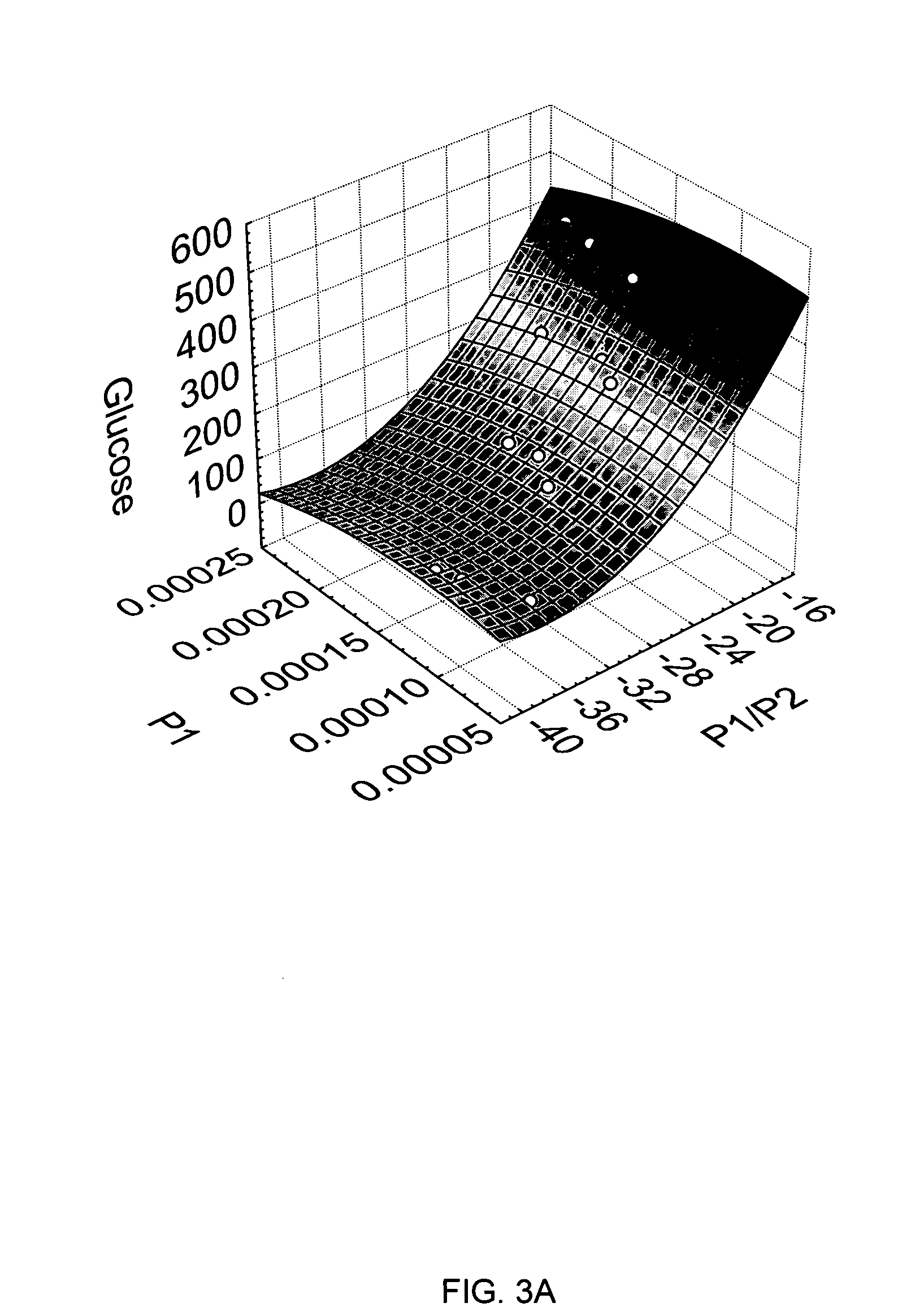System and methods for providing corrected analyte concentration measurements
a technology of analyte concentration measurement and measurement system, applied in the field of diagnostic testing, can solve problems such as inaccuracy of detected signal, incorrect reading, and affecting the resulting analyte concentration measuremen
- Summary
- Abstract
- Description
- Claims
- Application Information
AI Technical Summary
Benefits of technology
Problems solved by technology
Method used
Image
Examples
Embodiment Construction
[0055] In accordance with the present disclosure provided herein are electrochemical biosensors developed for measuring an analyte in a non-homogenous fluid sample, such as in a food product or in a bodily fluid chosen from blood, urine, saliva and tears. At a minimum, the biosensor includes at least one or more electrodes and a reaction reagent system comprising an electron mediator and an oxidation-reduction enzyme specific for the analyte to be measured. In one embodiment, the electron mediator comprises a ruthenium containing material, such as ruthenium hexaamine (III) trichloride.
[0056] As used herein, the phrase “working electrode” is an electrode at which the electrochemical oxidation and / or reduction reaction occurs, e.g., where the analyte, typically the electron mediator, is oxidized or reduced.
[0057]“Counter electrode” is an electrode paired with the working electrode. A current of equal magnitude and of opposite polarity to the working electrode passes through the coun...
PUM
| Property | Measurement | Unit |
|---|---|---|
| Length | aaaaa | aaaaa |
| Time | aaaaa | aaaaa |
| Time | aaaaa | aaaaa |
Abstract
Description
Claims
Application Information
 Login to View More
Login to View More - R&D
- Intellectual Property
- Life Sciences
- Materials
- Tech Scout
- Unparalleled Data Quality
- Higher Quality Content
- 60% Fewer Hallucinations
Browse by: Latest US Patents, China's latest patents, Technical Efficacy Thesaurus, Application Domain, Technology Topic, Popular Technical Reports.
© 2025 PatSnap. All rights reserved.Legal|Privacy policy|Modern Slavery Act Transparency Statement|Sitemap|About US| Contact US: help@patsnap.com



